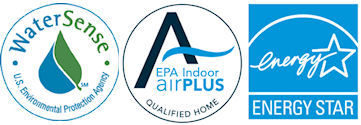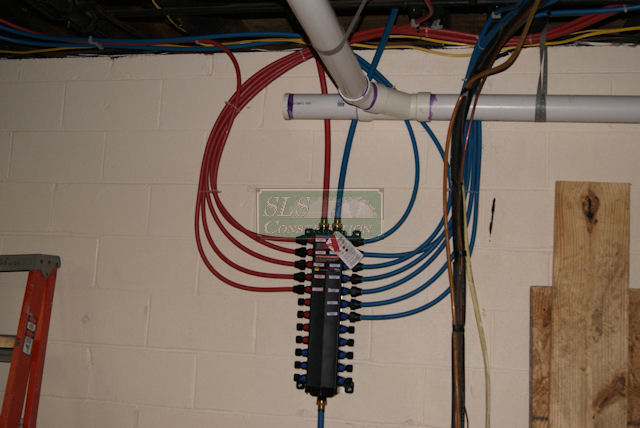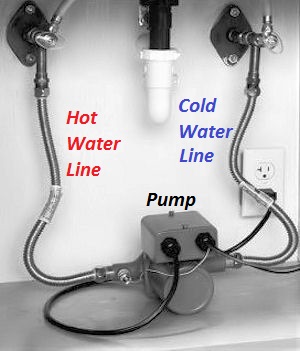 This week happens to be the EPA’s 5th annual “Fix a Leak” week which we have covered before. Instead of focusing on unintentional water leaks this year we wanted to focus on one of the biggest intentional ones & that is your hot water faucets & showers. Ironically most people don’t realize how much they were wasting until they replace their faucets with a newer more efficient one & have to wait a minute or more for hot water to come out of the tap.
This week happens to be the EPA’s 5th annual “Fix a Leak” week which we have covered before. Instead of focusing on unintentional water leaks this year we wanted to focus on one of the biggest intentional ones & that is your hot water faucets & showers. Ironically most people don’t realize how much they were wasting until they replace their faucets with a newer more efficient one & have to wait a minute or more for hot water to come out of the tap.
 The WaterSense program makes up the EPA’s third leg of the stool when it comes to building higher performance homes. While one needs to have the house ENERGY STAR certified to earn the Indoor airPLUS &/or WaterSense certifications, there is nothing that prevents one from stealing those ideas for their own home or program. Both LEED for Homes & the NAHB’s NGBS actually do that and will even give you additional points if you obtain those certifications. The WaterSense program makes up the EPA’s third leg of the stool when it comes to building higher performance homes. While one needs to have the house ENERGY STAR certified to earn the Indoor airPLUS &/or WaterSense certifications, there is nothing that prevents one from stealing those ideas for their own home or program. Both LEED for Homes & the NAHB’s NGBS actually do that and will even give you additional points if you obtain those certifications. |
The optimal fix for this issue happens to be the one with the least amount of verbiage on the WaterSense checklist; e.g. Section 3.3 “Hot water delivery” where it simply lists; .1 – Acceptable system type & .2 – 10°F temp. change within ≤ 0.6 gallons. So what is an “acceptable system?” Well that is one where there is no more than ½ a gallon of water between the hot water tank & the shutoffs. If that isn’t possible or practical they allow one to utilize an “on demand” pump.
 Yes, they do state from the hot water supply to the fixture; but as many fixtures now include the supply lines that connect directly to the shutoffs &/or where the shutoffs are part of the shower valve & they give you up to .6 gallons for the whole setup… Yes, they do state from the hot water supply to the fixture; but as many fixtures now include the supply lines that connect directly to the shutoffs &/or where the shutoffs are part of the shower valve & they give you up to .6 gallons for the whole setup… |
The ½ gallon method:
 Figuring out if your lines hold 64 ounces or less is pretty straight forward for home-run systems – length of pipe x ounces (see chart below) + manifold ounces = ounces in line. If that is 64 ounces or less you are golden. If you are designing a house from the start, it doesn’t take much to make sure the utility room with the water heater is place closely to the kitchen, laundry & the bathrooms (even with an upstairs).
Figuring out if your lines hold 64 ounces or less is pretty straight forward for home-run systems – length of pipe x ounces (see chart below) + manifold ounces = ounces in line. If that is 64 ounces or less you are golden. If you are designing a house from the start, it doesn’t take much to make sure the utility room with the water heater is place closely to the kitchen, laundry & the bathrooms (even with an upstairs).
|
Size |
Copper M |
Copper L |
Copper K |
CPVC CTS SDR 11 |
CPVC SCH 40 |
PEX |
PEX CTS SDR 9 |
|
⅜ |
1.06 |
0.97 |
0.84 |
N/A |
1.17 |
0.63 |
0.64 |
|
½ |
1.69 |
1.55 |
1.45 |
1.25 |
1.89 |
1.31 |
1.18 |
|
¾ |
3.43 |
3.22 |
2.90 |
2.67 |
3.38 |
3.39 |
2.35 |
|
1 |
5.81 |
5.49 |
5.17 |
4.43 |
5.53 |
5.56 |
3.91 |
|
1¼ |
8.70 |
8.36 |
8.09 |
6.61 |
9.66 |
8.49 |
5.81 |
|
1½ |
12.18 |
11.83 |
11.45 |
9.22 |
13.20 |
13.88 |
8.09 |
|
2 |
21.08 |
20.58 |
20.04 |
15.79 |
21.88 |
21.48 |
13.86 |
 While it maybe impossible or impractical to try hitting the .5 gallon standard in an existing house, using the numbers above you can easily start to appreciate just home much those long lines we run in the basement cost us. It is time to stop placing the water heater at one end of the basement when all our needs are on the other. In many cases when it comes time to replace the water heater, by taking a quick look around & spending another $50 or so, you can save yourself a ton of water and enjoy a hotter shower a lot quicker. While it maybe impossible or impractical to try hitting the .5 gallon standard in an existing house, using the numbers above you can easily start to appreciate just home much those long lines we run in the basement cost us. It is time to stop placing the water heater at one end of the basement when all our needs are on the other. In many cases when it comes time to replace the water heater, by taking a quick look around & spending another $50 or so, you can save yourself a ton of water and enjoy a hotter shower a lot quicker. |
The “On Demand” option:
 Please notice that it says “on demand”, not timer driven, not motion sensor driven, not continuous, but demand driven (aka you must press a button.) The on-demand pump is generally located under the furthest sink and ties into both the hot & cold water side. Once you press the button it starts drawing water from the hot side returning it to the cold side until it senses a temperature change & it shuts off. Voilà you now have hot water at the faucet.
Please notice that it says “on demand”, not timer driven, not motion sensor driven, not continuous, but demand driven (aka you must press a button.) The on-demand pump is generally located under the furthest sink and ties into both the hot & cold water side. Once you press the button it starts drawing water from the hot side returning it to the cold side until it senses a temperature change & it shuts off. Voilà you now have hot water at the faucet.
While this is a great system for older style pipe runs, it isn’t so hot on home-run systems or for those stuck in the middle of the run if no one has pressed the button. The first one (home runs) is actually easy to deal with if you go with a modified version where you run just one main line to the bathroom & place the manifold close by. Now when you run the pump the line is charged up to the manifold / sink or shower & the only cold water left is in the one line to other item.
For the bathroom in the middle issue, one can run another start switch to the pump or place a second pump in that room. In some cases though we hear the ever popular “I don’t want that there.” In this case you would have to run a return line back to the water heater & connect the pump by the water heater. Now you would have to simply press the button in whichever bath & the pump would kick on.
What else is on the checklist…
|
